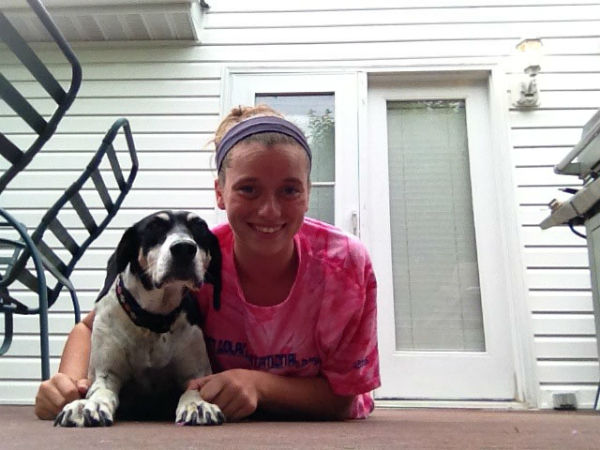Pet owners benefit from animal companionship
The American Pet Products Association estimates that Americans will spend $58.51 billion, approximately the annual GDP of Bolivia, on their pets in 2014.
This record expenditure is due to both an increase in pet ownership among all United States households to 68 percent, according to the 2013-2014 APPA National Pet Owners Survey, and the growing tendency of Americans to humanize their animal companions.
Pet owners often include their four-legged friends in family portraits, sleep with them at night, and tell them their deepest, darkest secrets. Some pets are particularly pampered and treated to their own birthday celebration, spa days, and play dates.
Senior Rachael Wood confesses that she spoils her Yorkie, Smokey.
“I love my dog Smokey and consider him a part of the family,” Wood said. “During the winter, I make sure he has a nice sweater to wear so he doesn’t get cold. And every birthday I give him peanut butter ice cream. In a way, he’s like a spoiled child.”
A pet enjoys a privileged status in senior Chiara Sauvage’s household as well.
“Bellatrix kind of owns the house,” Sauvage said. “My mom didn’t used to be a cat person, and now the cat is her favorite child.”
Although pets can serve as surrogate family members, the stereotype of a reclusive, ‘crazy cat lady’ does not stand up to scrutiny. A study by an Australian cardiologist found that pets catalyze social interaction, noting that “pets do not just substitute for human relationships. They complement and add to them, giving a special and unique dimension to human life.”
The benefits of pets extend far beyond companionship though.
Caring for vulnerable creature increases emotional intelligence and teaches responsibility.
“When you first get a pet, you think it’ll be all just fun, but there is a lot of responsibility that comes with having a pet,” sophomore Barbara Medina said. “You always have to take care of them, make sure they are okay, and feed them.”
People learn about love and loss from their pets as well.
“My dog died my first week of freshman year,” sophomore Ashley Gonzalez said. “I had her ever since I was born, so it was like a family member dying. It was really sad.”
Interacting with a pet is proven to increase levels of serotonin, a neurotransmitter responsible for regulating mood, appetite, and sleep, and decrease the amount of cortisol, the primary stress hormone as well.
Senior Kristin Tran claims that her furry friends reduce her anxiety.
“My cats are great stress relievers,” Tran said. “They bring me joy and are great friends at home.”
Students note that their animal companions provide comfort in times of difficulty.
“I love my dogs KC and Kozmo,” freshman Justin May said. “They are so cute and loveable and always cheer me up when I am in a bad mood.”
Senior Diana Kessler is impressed by how perceptive her cat Leo is.
“Leo and I always cuddle while we watch Netflix,” Kessler said. “It’s crazy though. I think that pets know when you’re feeling sad.”
Researchers proclaim other health benefits of pet ownership, including lowered blood pressure, reduced risks of heart attacks and strokes, and improved physical fitness.
The knowledge that pets contribute to physical, emotional, and social well-being inspired animal-assisted therapy programs in hospitals, nursing homes, and prisons. One local initiative, Fairfax Pets On Wheels, connects pets with residents living in assisted living and elderly care facilities. Any student with a “loveable pet who would enjoy putting a smile on someone’s face” is invited to participate and earn service hours.
The Fairfax County Animal Shelter strives to use pets to improve the quality of life for senior citizens as well. Its Pets for Seniors program provides older adults with opportunities to participate in foster programs. Additionally, the shelter gives adoption incentives and offers to assist them with purchasing pet food or supplies.
Pets are a source of joy for people of all ages.
“I think the best part of having a pet is having a companion,” sophomore Andrew Hutchins said. “You can walk them and talk to them, even though they don’t always understand. You build a relationship with your pet. You get to know them really well, and it’s really nice.”
















